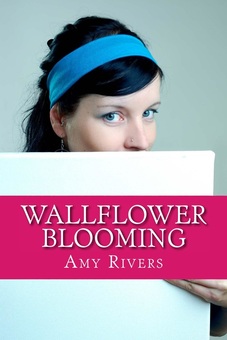 Supreme Court Justice Antonin Scalia walks into a bar in Heaven, looking forward to a quiet glass of wine after a long and busy life. He orders his wine and as the bartender pours, he says: Bartender: Can you believe how political Supreme Court appointments can be? When do you think they’ll get around to appointing your replacement? Scalia: (sighing) Yes I can. The Framers of the Constitution made the process explicitly political by putting the Senate in charge. But they can’t avoid it forever either. I wish they’d just get on with it. There’s important work to do. Bartender: But aren’t you an originalist? If the Constitution allows for the politicization of the appointment process, shouldn’t we just stand back and let it happen? Scalia: Sure, but we don’t have to like it. And those Senators have to do their jobs…they don’t have to like it. Bartender: Isn’t there anything the People can do to make the Senate get on with it? Scalia: (smirking) Two words: Seventeenth Amendment.
0 Comments
 Categorizing my work gives me a headache. When I think about it, I always get this scene from The Princess Bride running through my head: The Battle of Wits https://youtu.be/i6TQ7ljcsjk "You guessed wrong! That's what's so funny!!" Picking the right category for your book is important if you want people to read it. Why? It comes down to marketing and targeting your audience. For instance, if you wrote a romance, it wouldn’t be a natural fit for horror readers, right? That’s not to say that a horror reader wouldn’t like your book. It just means that, for the purposes of selling the book, you want to put it in front the readers most likely to read it. Write a romance, market it to romance readers. Pretty simple, right? Wrong! It actually gets really tricky, especially when you’re writing fiction that is aimed primarily at a female audience. General fiction vs. women’s fiction vs. chick-lit. Oh my! Ok, so here’s how this story pans out in my head. When I started writing Wallflower Blooming, I wasn’t thinking about where it would fit on a bookstore shelf. I was thinking about the characters and what happens to them. I knew a few things. 1) I wanted to have a female protagonist, partly because I think women are awesome and partly because, well, I am one and so it’s a point of view I understand pretty intimately. 2) I wanted to avoid getting all romantic. I never set out to write a romance, not because I don’t love romance, but simply because I’m such a romantic sap that I wanted to challenge myself not to make it all about love. (those who know me will be chuckling here…don’t worry, I understand). So I wrote the book. About half way through an unexpected thing happened…my characters took over. The book went in a completely different direction than I’d planned and guess what, it got all romantic! But here’s the thing...I like it! I like the way the book turned out. At the end of the day, my characters felt real to me and their struggles, believable. So I was happy. THEN, on a whim, I entered my manuscript in a contest. I didn’t win (but the feedback was so immensely helpful). What DID happen though was that the judge called my book women’s fiction. Having come from a background working with victims, most of whom were women, I have strong feelings about the way gender is used to differentiate things and I resisted the label. Yes, my book is about a woman, but it’s still just fiction, right? Well, that explanation only works if you never want anyone to pick up your book. I, however, wanted to find an agent. And part of finding an agent entails understanding where your book fits in the overall scheme of book marketing. As an often light-hearted book about a woman character who finds herself romantically involved, I could see why that judge labeled it women’s fiction. But the situation only got more complicated. One of my beta readers called the book chick-lit! And I sort of scratched my head and thought, “wait a minute, I’ve finally accepted women’s fiction, can’t we just stop there?” So, I had to consider whether my book is actually chick-lit. And this led me to the question: “What the heck is the difference between women’s fiction and chick-lit???” There are about a zillion articles on this very topic, which made me feel a little less clueless. Here’s one I liked. http://agencygatekeeper.blogspot.com/2010/07/romance-womens-fiction-or-chick-lit.html So, the gist seems to be that chick-lit and women’s fiction both focus primarily on situations involving women. But chick-lit tends to be more light-hearted and appeals to a younger audience. Women’s fiction tackles deeper issues and appeals to a broader range of women. Well, that didn’t help and I’ll tell you why. Wallflower Blooming tackles women’s issues...some lighthearted and romantic, some deeper. It’s an entertaining read, but still thought provoking. It’s got some romance going on, but it also deals in family struggles and personal growth…and, oh yes, small town politics. It’s been read and enjoyed by women ranging in age from 18-86 (so far). So you tell me. Women’s fiction or chick-lit? Maybe both. I guarantee that it's fiction and there are women in it. So go forth and enjoy! |
AuthorI'm generally pulled in a million different directions and I wouldn't trade it for the world. Here's a glimpse of my life - hope you enjoy it! And if there's a big lapse between posts, well, that's the way life goes in Amy's world. Archives
October 2022
Categories
All
|
|
Copyright 2024 by Amy Rivers. All rights reserved. |
 RSS Feed
RSS Feed